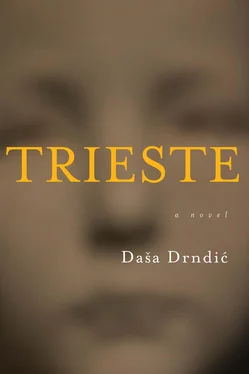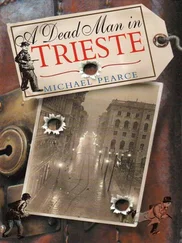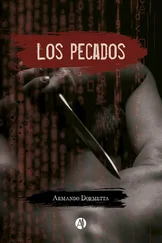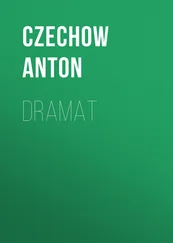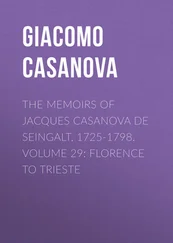Once Nkrumah is no longer there to protect him, Dr Horst Schumann leaves Ghana handcuffed to two detectives. Ah, happy days, schöne Zeiten. Dr Schumann will remember his African interlude; so many old acquaintances from Hitler’s Chancellery, the occasional encounters with Dr Helmut Kallmeyer, for example, the exotic hors d’oeuvres … perhaps it is better not to remember. Detained in 1966, Dr Schumann appears before a court in 1970 and then announces he is not well. He’s troubled by high blood pressure. He collapses at trial (this turns out to be a feigned heart attack), so the administration of the prison, humane to a fault, releases him for treatment. No-one protests, not the public or the media, and for twelve years thereafter Dr Horst Schumann lives in Frankfurt, attends the Frankfurt Book Fair, goes to concerts (Frankfurt has a passable symphony orchestra). He strolls in spring through the streets, but he does not leave town on outings, because Sachsenhausen is nearby, and Dr Schumann is not eager to see Sachsenhausen, as his blood pressure might skyrocket. Now and then Dr Schumann enjoys a frankfurter, and this ultimately kills him: he dies on 5 May, 1983, just after his seventy-seventh birthday.
The killings at Grafeneck last until mid-December 1941. Then they stop abruptly. There are no handicapped and retarded left; they have all been successfully executed: 10,654 people. Grafeneck and its surroundings are now cleansed, and so much the healthier. Grafeneck is dropped from the euthanasia programme. All traces are erased, the walls and the wire; the natural surroundings revert to green; the staff go on holiday. It is nearly Christmas, and so begins the season of goodwill and endowment. With the new year comes a new location: Hadamar. At Hadamar 10,824 patients are gassed. After the war, of the hundred or so staff members who run the Grafeneck euthanasia programme, eight are charged and three receive prison terms ranging from eighteen months to five years. Fifty years later, in 1990, a memorial is raised at Grafeneck listing the names of the patients who were killed, and the “patients” who killed them.
Yes, Kurt Franz. Kurt Franz still works as a cook at Buchenwald; then in 1942 he goes to Belzec for a time, then on to Treblinka. Treblinka becomes his kingdom. After the revolt in August 1943 Kurt Franz is made camp commander. He oversees the last “gas operations” and finally shuts down Treblinka.
That’s not true! I was not commander of the camp! I had the rank of Oberscharführer at Treblinka, and as a member of the Waffen-S.S. units I was responsible exclusively for the camp guards. The Oberscharführer is technically a sergeant, not an officer. My conscience is clean.
At Treblinka Kurt Franz struts about, rides, goes off for a morning jog, sings, sings a lot (Kurt Franz loves music, especially orchestral music), keeps himself in shape, keeps his beautiful body trim, and faithful Barry is always at his heels. At Treblinka Kurt Franz lets his imagination run wild, he comes up with little extravagances, he plants flowers.
We planted flowers in the end, when we were getting ready to leave. I ordered the excavators to level off the camp. We planted lupins. What? Lupins are perennials, lovely flowers, spectacular floral candles. Against an attractive leafy background they create a stunning floral landscape. Lupins are ideal for planting in colourful clusters in full sun. I love flowers. I have a well-tended garden.
Before closing down the camp, Kurt Franz kills time by killing people.
Lies, all lies. I heard with my own ears how Wirth, in quite a convincing voice, explained to the Jews that they would be deported further and before that, for reasons of hygiene, they must bathe, and their clothes would have to be disinfected. Inside the disinfection barrack was a long wooden counter for the deposit of valuables, jewellery, money and such — small things. It was made clear to the Jews that after the bath their valuables would be returned to them. Then the Jews applauded Wirth enthusiastically. Their applause is still ringing in my ears. So, the Jews believed Wirth.
In late 1943 Kurt Franz is transferred to Trieste and tasked with killing partisans and Jews. From Trieste he flees to Austria in April 1945, but American soldiers catch up with him and put him behind bars. Big and strong, Kurt Franz escapes from prison. He goes back to his native Düsseldorf and, using his own name, works first as a labourer at a building site, then returns to his old profession, cooking. For fourteen years Kurt Franz goes fishing, tells his children all sorts of fairy tales, plays football on Sundays, compiles new albums of colour photographs of nature, friends, animals, soon loses his hair and puts on weight. Still, it’s as if the happy days are here again. Then in 1959 Kurt Franz is arrested once more and on 3 September, 1965, at the first Düsseldorf trial for crimes committed at Treblinka, he is charged with murdering at least 139 camp inmates and participating in the killing of more than 300,000 Jews, and sentenced to life imprisonment. During the trial, as evidence, the police present a photographic album they find in Kurt Franz’s garage behind empty, dusty wine bottles and the muddy rubber boots Kurt Franz wears when he waters his garden flowers. On the album in large letters are the words Schöne Zeiten, which would be “The Good Old Days” or “Happy Days” or “The Joy of Life”, ah, the age of ignorance.
This much Haya is aware of in 1976. Only later, only now, in 2006, according to the surprises that life serves up to its drowsy consumers, only now does Haya learn that in 1993 Kurt Franz is released from prison and dies in an old people’s home in Wuppertal on 4 July, 1998, when the Red Cross send her a photograph of a fat bald man, a doddering old geezer, actually, sitting hunched over a wooden table, and next to him an elderly woman in a rumpled house dress, dishevelled, obese, sagging and slovenly. The wall behind Mr and Mrs Franz is covered in paisley wallpaper, and on it hang a number of small trophies, hunting trophies, and insignia that look like medals. This photograph does not hold Haya’s interest. By then, in 2006, she has a thick file on Kurt Franz, a file which lies like a memento at the bottom of her red basket, like a deep blue tattoo on her bosom, like a shroud under which her brain pulses more and more feebly, relegated to the past.
The Red Cross is always late or never gets there at all. The Red Cross is so busy everywhere in the world. The Red Cross is caught up in a broad range of activities, chiefly humanitarian, so it has trouble concentrating on individual activities, so its work is dispersed, aflutter and it never takes sides. The imperative of the Red Cross is to sustain a universal, global neutrality. In terms of history and people. The Red Cross has been reminding Haya for six decades, every 8 May, of its day, thanking her for the trust she has shown it, the Red Cross, of course, hoping that soon it, the Red Cross, will contribute to solving her “case”, regardless of the fact that, of course, Haya Tedeschi may no longer be alive by then. Haya, on the other hand, does not think of the case of the disappearance of her son Antonio Tedeschi on 13 April, 1945, as hers, because she did nothing to bring about the disappearance of her son Antonio Tedeschi, it was due to, let’s say, historical circumstances. The Red Cross has contacted Kurt Franz, in and out of prison, but Kurt Franz knows nothing of an Antonio Tedeschi, and the name Haya Tedeschi is completely foreign to me, Kurt Franz says, he holds and fiddles with a copy of the birth certificate that the Red Cross workers have given him to inspect. And besides, Kurt Franz says, Tedeschi ist ein jüdischer Name. You don’t think that I would risk my life for a Jewish woman, do you?
Читать дальше
